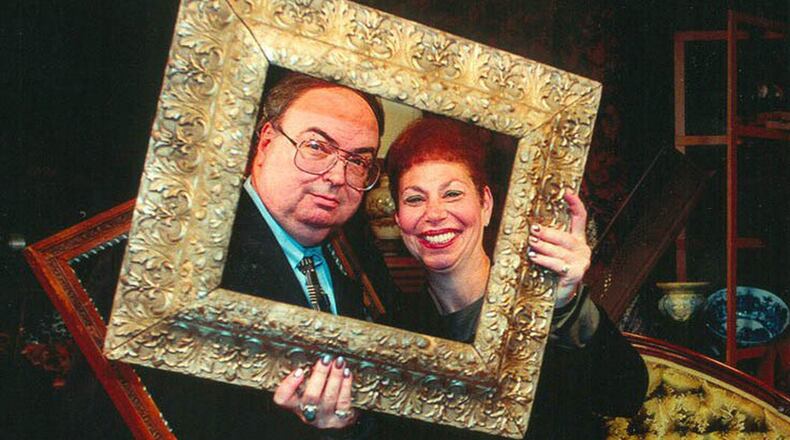Dear Helaine and Joe:
I have this antique my mother purchased and had refinished when I was a child in the 1960s. I believe it is American from the 1800s. The mirror looks to be original. What is this piece of furniture called and what would you think a ballpark estimate would be of its value?
Thank you,
W. G.
Dear W. G.:
Thank goodness your mother did not do what Joe’s mother might have done. She might very well have taken this piece and “antiqued” it using a commercially available kit that would have left the surface of this piece a poisonous green (or sometimes red).
Once this was done, there was no going back. The paint was in the grain and it was there until the end of time. The refinishing job done by W. G.’s mother is not nearly that bad, but it did strip the solid oak piece of its original rich golden color and replace it with a surface that resembles mahogany (at least in photographs and from a distance).
Homeowners of the third and fourth quarter of the 20th century may have liked the ersatz mahogany finish (and it could be pleasant for home furnishing use), but today’s collectors are less than thrilled. This kind of furniture facelift will cause current collectors to deduct significant dollars from the value of the nice old piece.
Pieces of furniture with this configuration are really known by two names. Some people call it a side-by-side secretary, but most refer to it as a “Larkin desk.” This later designation refers to the Larkin Company of Buffalo, N.Y.
The firm was founded in 1875 by John D. Larkin, who went into business manufacturing a simple bar of yellow soap known as “Sweet Home Soap.” The simple product may have not spelled great success, but Larkin was cosmically lucky in that he had Elbert Hubbard for a son-in-law.
Hubbard was a super-salesman, founder of the Arts and Crafts Roycroft community and author of the patriotic essay “A Message to Garcia.” He also helped propel the company from the maker of a single product to a commercial powerhouse. It was reportedly Hubbard’s idea to offer premiums with soap purchases. The premiums started with simple souvenir picture cards and blossomed into Larkin offering its customers everything from piano lamps, silverware, pottery and yes, desks.
The premium program was so successful that Larkin had to open his production facilities, which included his own furniture factory. The motto was “factory to family,” and one of the most popular products was a drop front combination desk and bookcase, with a glass-fronted bookcase and mirror above the desk section.
Other companies made this type of unit as well, but the name “Larkin desk” is generic and most commonly employed. As for the insurance value, the refinishing hurts quite a lot, but still, W. G. should value her circa 1910 side-by-side secretary for between $350 and $500.
———
Helaine Fendelman and Joe Rosson have written a number of books on antiques. Do you have an item you'd like to know more about? Contact them at Joe Rosson, 2504 Seymour Ave., Knoxville, TN 37917, or email them at treasures@knology.net. If you'd like your question to be considered for their column, please include a high-resolution photo of the subject, which must be in focus, with your inquiry.
About the Author
Keep Reading
The Latest
Featured


